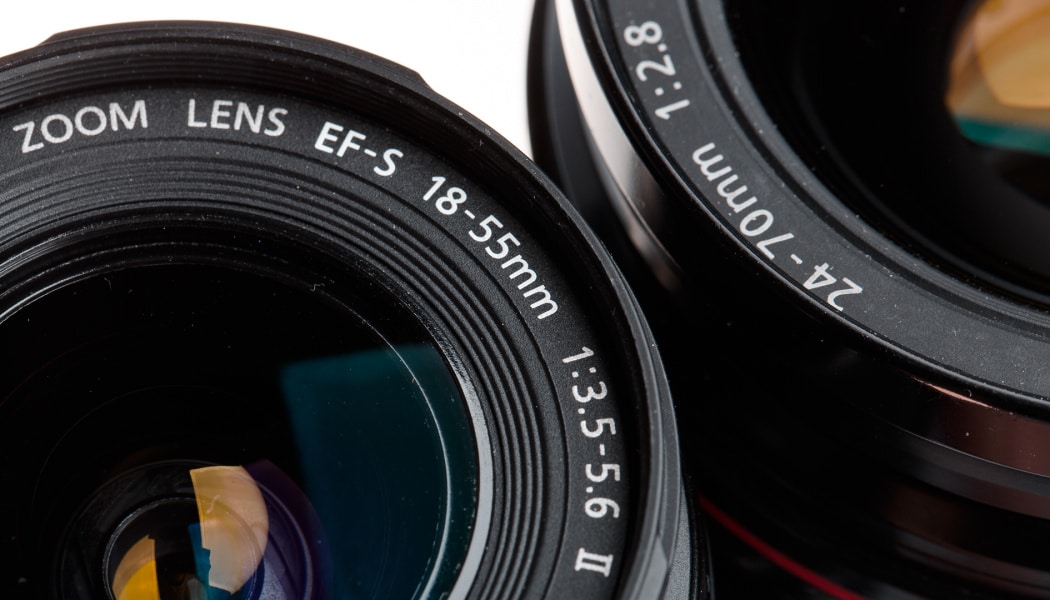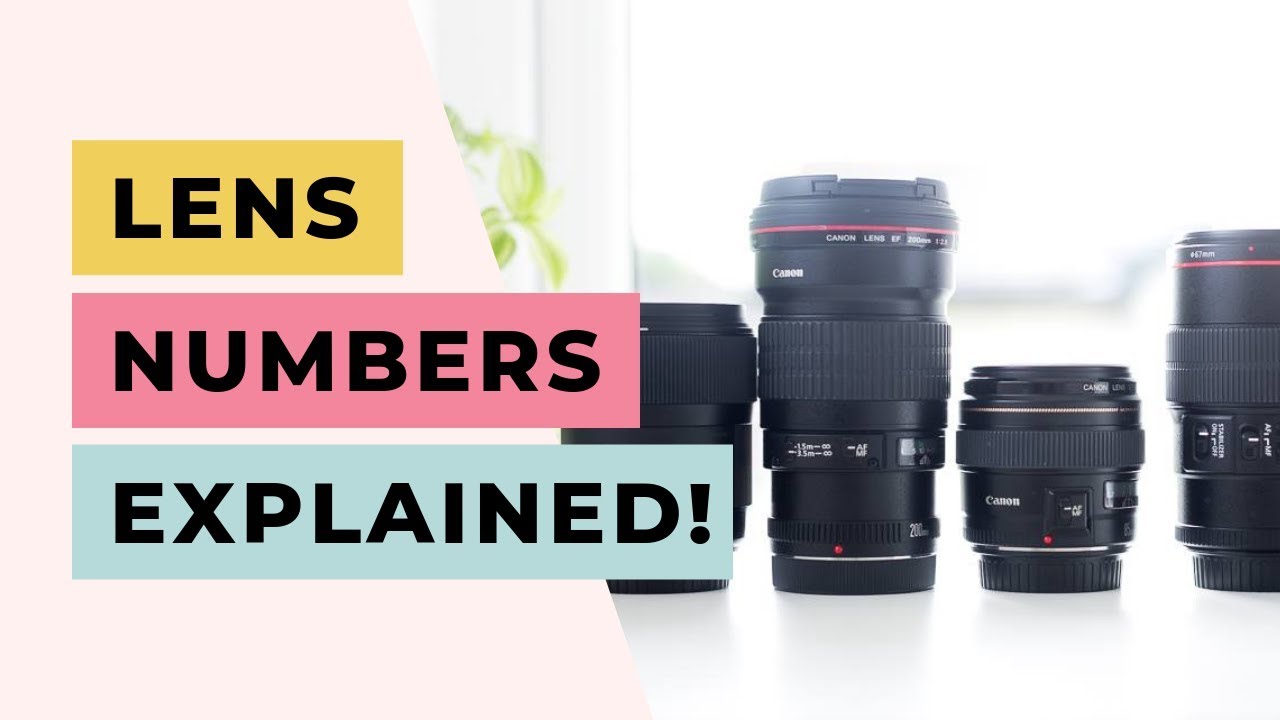Demystifying Camera Lenses: What Do The Numbers Mean?
Introduction
Lens numbers can be tricky to understand when you're new to photography or even if you've been at it for a while. But fear not, this article is here to demystify those puzzling figures on your camera lens. We’ll delve into what those numbers actually mean, their impact on your photography experience, and why you shouldn’t ignore them. The knowledge you gain will empower you to exploit your lenses’ full potential and enhance your photographic skills. So, let's start unmasking the secrets of your lens.
What Do Numbers on a Camera Lens Mean and Why Should You Care?
The alphanumeric details inscribed on your camera lens may appear perplexing but are extremely significant for your photography journey. Lets decipher them and comprehend their relevance:
- Focal Length: The fundamental figure printed on all lenses. It evaluates the 'zoom' level of your lens and is pivotal for determining the field of view and image composition.
- Aperture Value: The 'f' number on your lens. It elucidates the lens's opening size, indicating light intake capacity and its effect on the image's brightness and depth of field.

- Image Stabilization: Mentioned as effectiveness in 'stops', this value gauges the lens’s ability to counterbalance camera shake, ensuring sharper images, especially in handheld shots.
- Filter Thread Size: A number followed by 'mm'. It identifies the diameter of the lens's front end, crucial while buying filters or lens caps.
Understanding these numbers and their significance provides effective control over your photography, helping you manipulate these variables for desired visual results. Therefore, acknowledging them becomes central to unleashing your creative potential in photography.
What is the Significance of Focal Length on a Camera Lens?
The Impact of Focal Length on Your Photography
The focal length of a camera lens is a critical aspect that significantly shapes your photography's look and feel. Indicated in millimeters (mm), it essentially measures the distance between the lens and the image sensor when the subject of your photograph is neatly focused.
Here's how the focal length changes how your photos come out:

- Field of View: Focal length directly affects the field of view. For instance, lenses with shorter focal lengths like 18mm, 24mm give you a broader field of view, making them perfect for capturing panoramic landscapes or group photos.
- Magnification: On the flip side, lenses with a higher focal length (say 200mm or 300mm) provide a narrower field of view but greater magnification. This makes them the go-to lens choice for detailed portraits or wildlife photography where you need to capture subjects from a distance.
- Depth of Field: Interestingly, the focal length also influences the depth of field in your photos. A smaller focal length tends to make the background appear distant from the subject, introducing a feeling of depth. Conversely, a larger focal length can compress the perspective, making the elements in your frame look closer to each other.
- Perspective: Indeed, by changing the focal length, you can modify the perspective in your photos – from capturing all-encompassing views to emphasizing intricate details, you’re in control.
In essence, focal length plays an integral role in defining the aesthetics and storytelling capabilities of your photos. As you adjust the focal length, you redefine the image's scale and proportions, opening new avenues of creativity. Leveraging this can be instrumental in honing your photography skills.
What Does the Aperture Number Indicate on a Camera Lens?
The aperture number on a camera lens, often signified by 'f' followed by a numeric value (like f/1.8), refers to the size of the lens's opening. Essentially, it dictates the amount of light permitted to reach the camera's sensor.
Here's what the aperture number means:
- A smaller 'f number' denotes a larger aperture. This equates to more light entering the lens, resulting in brighter and sharper images. Ideal for capturing shots under low-light conditions.
- Contrastingly, a larger 'f number' implies a smaller aperture, limiting the light influx. This helps to prevent overexposure when shooting under bright light.
In a nutshell, the depth of field, a critical component in blurring or focusing the image background, is also controlled by the aperture value.
The Role of Maximum Aperture in Photography
The maximum aperture is the greatest possible opening that a lens can have. It's a significant aspect due to its substantial impact on photo brightness and quality, but what makes it so crucial for a photographer?
Here are a few reasons:
- Maximum Light Entry: Lenses with larger maximum apertures allow more light to penetrate. This is beneficial when taking shots in dimly lit environments as it offers brighter and sharper images.
- Faster Shutter Speed: In low-light conditions, a wider maximum aperture enables faster shutter speeds that effectively reduce camera shake, providing a crisper image.
- Creative Control: A lens with a lower aperture number can produce a shallow depth of field, giving that blurred background or 'bokeh' effect. This puts more focus on the subject and gives an artistic spin to your photos.
In conclusion, comprehending the aperture number on your camera lens is a game-changer. Not only does it give you control over light and focus, but it also provides the creative liberty to generate desired visual effects.
How Do Image Stabilization Numbers Affect the Quality of Photos?
The term image stabilization (IS) may seem quite technical, but its function is rather simple - it aims to combat the effects of camera shake, which is essential when shooting handheld. It is usually expressed as an effectiveness up to a certain number of 'stops.' But what does this mean to your photo's quality? Let us break it down for you:
- Understanding 'Stops': In the context of IS, 'stop' is a term photographers use to describe the halving or doubling of the amount of light. For example, an image stabilization up to 4 stops means you can use a shutter speed four times slower than you would normally without risking blur from camera shake.
- Advantages of Higher 'Stops': Higher 'stops' indicate more effective stabilization. When your lens states an IS of 3 stops, it means you can slow down the shutter speed three times more than without IS. This feature is beneficial when shooting in lower light, allowing you to take clearer images without increasing the ISO and subsequently, the image noise.
- Impact on Image Quality: An effective IS compensates for the minor movements you make while holding the camera, which may impact the sharpness of your photo. Therefore, the higher the number of 'stops' your lens offers, the better your chances are at capturing sharp, high-quality photos.
Remember, image stabilization numbers are not just specs on your lens - they equip you with the capability of achieving professional-level sharpness in your photos, enhancing your overall photography experience.
What do Filter Thread Numbers Tell About a Camera Lens?
Filter thread numbers, often overlooked, play a vital role in the lens specification. Marked in millimeters (mm), they refer to the diameter of the front of the lens, which corresponds to the size of the accessory or filter that can be attached to it.
Decoding their significance can bring about a significant enhancement to your photography skills and, subsequently, your photographs. Here's a detailed understanding:
- Calculation of Filter Size: Intersection of lens focal length and its speed brings about the calculation of the filter size. Lens speed refers to the maximum aperture that a lens can utilize, whereas the lens focal length signifies the standard zoom/distance of lens. The combination of these two facets defines the size of the filter that would be apt for the lens.
- Importance of Suitable Filter Size: Using a filter of the appropriate size is essential to prevent unwanted light from entering the lens and affecting the image quality. A smaller filter might vignette the image by blocking the light, while a larger filter could let in extra, unwanted light.
- Impact on Image Quality: A correctly sized filter can enhance the image quality by controlling lighting conditions and protecting the lens from damage.
- Choice of Filters: Filter thread numbers provide compatibility information with various filters. This width can significantly affect the choice of filters for effects like polarization, UV/haze reduction, neutral density, and others.
Remember, understanding filter thread numbers is crucial when purchasing a lens, as they determine the ability to attach different accessories for various photography needs.
Conclusion
Image stabilization (IS) is typically mentioned as being effective up to a certain number of 'stops.' Each 'stop' refers to a halving or doubling of the amount of light. A lens that offers IS up to 4 stops, for instance, means you could use a shutter speed 4 times slower than without IS. This becomes critical when shooting handheld as it counterbalances camera shake, ensuring sharper images. As a rule of thumb, more 'stops' indicate higher levels of stabilization.
Related FAQs about what do the numbers on a camera lens mean
How do the numbers on a camera lens influence the choice of lens for different types of photography?
The lens numbers, including focal length, aperture, and stabilization values, greatly influence the choice of lens. They determine field of view, camera's light intake, and stabilization abilities. Shorter focal lengths are suitable for landscape shots, while longer ones are ideal for detailed, close-range photography. Similarly, aperture values influence lighting conditions and depth of focus, which plays into choosing a lens for diverse photography styles.
Why is understanding camera lens numbers important for a photographer?
Understanding lens numbers is crucial to optimize your photography. They provide control over the camera's field of view, light intake, and image stability. It empowers the photographer to manipulate these variables to achieve desired visual effects and improve the overall composition and quality of the photographs.
Can you alter the visual effects in a photograph by understanding and using the lens numbers effectively?
Absolutely. Knowledge of lens numbers equips a photographer to modify the visual effects drastically. Altering the focal length can change the perspective and depth of an image while adjusting the aperture can manipulate brightness and depth of focus. Effective use of image stabilization minimizes blur, adding sharpness to the captured shots.


